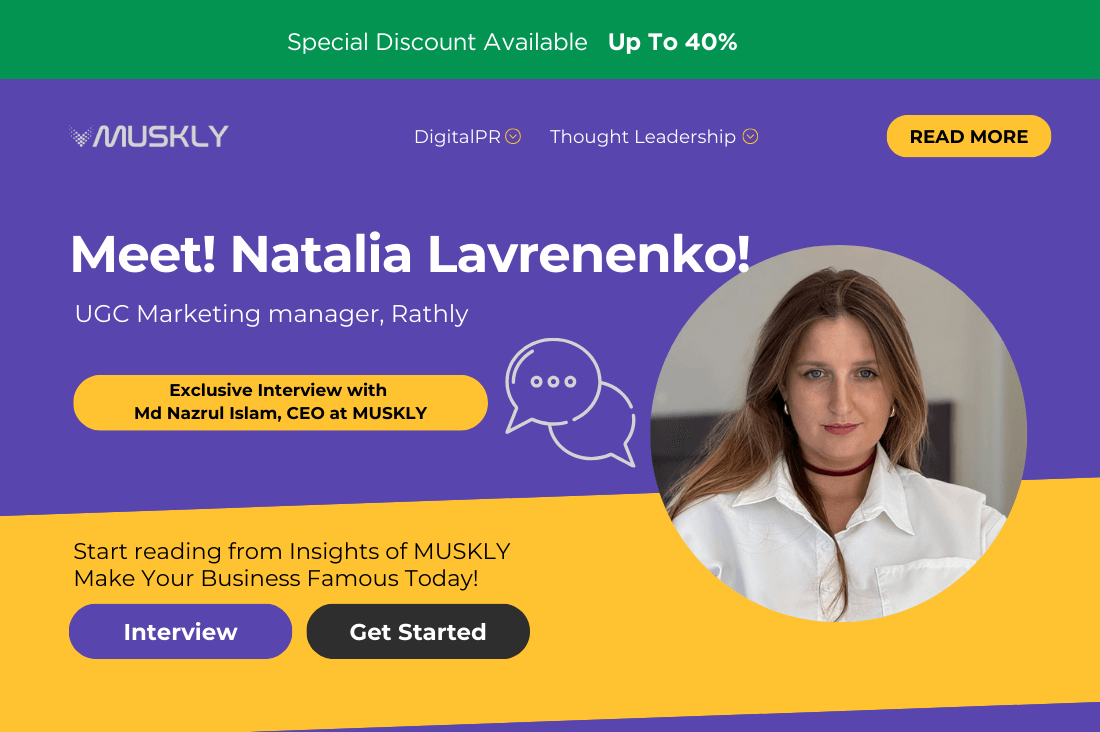
Natalia, welcome to Video Librarian! Could you tell us a bit about yourself and your journey to becoming an expert in UGC and video content creation?
Marketing and content creation have always been a part of my life. Before UGC, I worked in traditional marketing and spent years as a makeup artist, which gave me a deep understanding of visual storytelling. My shift to video content started with Amazon, where I created product demos that converted views into sales. That led me to Rathly, where I now help brands turn user-generated content into a powerful sales tool. Every project is about making content feel natural—real people, real reactions, no forced ads.
Your background sounds fascinating! Can you share a pivotal moment or experience that solidified your passion for UGC and shaped your career path?
The first time a brand sent me a message saying, “Your video doubled our sales,” everything clicked. It was a simple unboxing—no fancy edits, no script, just an honest reaction to the product. That moment proved that authenticity sells better than any polished ad. After that, I stopped thinking of UGC as just content and started seeing it as a direct connection between brands and real buyers. Every project since then has been about creating videos that feel personal, because that’s what makes people trust and buy.
You mentioned that UGC videos, especially behind-the-scenes content, resonate with your audience. What advice would you give to someone hesitant to pull back the curtain and share their creative process authentically?
Forget perfection. People connect with the process, not just the final product. The best-performing videos I’ve made weren’t polished—they were raw, real, and a little messy. Show the setup, the mistakes, the “almost there” moments. That’s what makes content feel human. Start small—film a quick clip of your workspace or a product test. If it feels too casual, you’re probably doing it right.
Many creators struggle with finding the right balance between showcasing their personality and delivering valuable information in their videos. How do you approach this balance in your own content?
Keep it simple—talk like you would to a friend. Viewers don’t need a lecture; they want quick, useful takeaways with personality. I always start with the value—what’s in it for them? Then I layer in my own style, whether it’s a reaction, a personal insight, or a small behind-the-scenes moment. If a video feels too scripted, I scrap it. The best ones feel effortless, like a conversation, not a pitch.
You’ve highlighted the effectiveness of short-form UGC videos. What are your top three tips for creating engaging short-form videos that capture attention and deliver results?
Hook fast, keep it real, and end with action. The first three seconds decide everything—start with movement, a bold statement, or an unexpected visual. No fluff, just get straight to the point. Authenticity wins over perfection, so ditch the scripts and show real reactions. Finally, always give viewers a reason to act—ask a question, spark curiosity, or point them to the next step.
Repurposing content across different platforms is crucial for maximizing reach. Can you share your process for repurposing a single piece of UGC across multiple social media platforms?
Start with the core video—usually a 30- to 60-second clip with the strongest hook. For TikTok and Reels, keep it raw and engaging, with captions and quick cuts. On Instagram, pull key moments for carousel posts or short Stories with polls or questions. YouTube Shorts get a slightly polished version, while LinkedIn or Facebook works better with a behind-the-scenes take or a text post summarizing insights. One video, multiple formats, all keeping the same authentic feel.
With the ever-evolving social media landscape, how do you stay ahead of the curve and adapt your UGC strategies to new platforms and trends?
Watching, testing, and tweaking. Trends move fast, so I spend time scrolling—not just as a creator but as a consumer. What grabs attention? What makes people comment? I test new formats early, whether it’s AI-generated voice-overs, fast cuts, or interactive captions. If something flops, I pivot. If it works, I double down. Staying ahead isn’t about chasing every trend—it’s about knowing which ones actually drive engagement and conversions.
What are some common misconceptions brands have about UGC, and how can they overcome these misconceptions to leverage UGC effectively?
Brands think UGC means low-effort or low-quality, which is wrong. The best UGC looks natural but is intentional. Assuming any customer video will sell could be a huge mistake. Random clips don’t convert; structured storytelling does. Instead of just collecting content, brands should guide creators with a clear hook, product highlight, and call to action. It’s not about perfection—it’s about purpose.
Looking towards the future, what excites you most about the future of UGC and video content creation, and what trends do you see emerging in the next few years?
AI-driven personalization and deeper audience interaction. UGC won’t just be about reviews—it’ll be interactive, shoppable, and hyper-targeted. Brands will use AI to match content styles to different customer segments, making every video feel tailor-made. Expect more community-driven campaigns where customers co-create, not just consume. The future for brands is that make audiences a part of the story.
Thanks for sharing your knowledge and expertise. Is there anything else you’d like to add?
Appreciate the opportunity to share! If you’ve ever shared a product you love, you’re already a creator. The best content comes from real people with real experiences. Start filming, stay authentic, and don’t overthink it. Your voice has value, and brands are paying attention.

